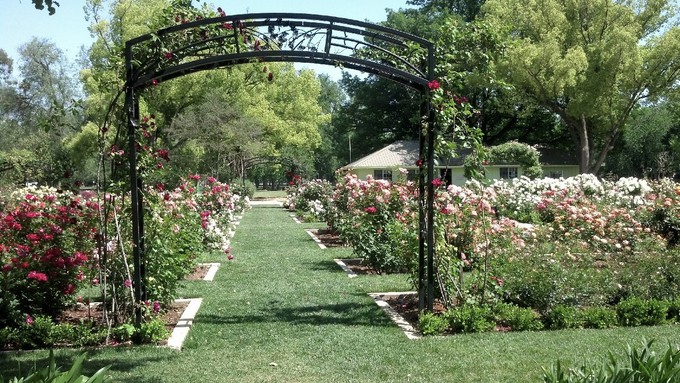
More pruning events set for Saturdays throughout January

This is what the McKinley Park Memorial Rose Garden will look like come spring. But first, all those rose bushes require pruning -- by volunteers. Debbie Arrington
Love to prune? Want to learn? McKinley Park’s famous Memorial Rose Garden is the place to be.
Volunteers are needed to finish pruning the beloved garden’s 1,200 roses – then maintain the roses through spring and summer.
No advance registration is needed. Just show up with thorn-resistant gloves, closed-toe shoes and maybe rain gear; these events are rain or shine.
Pruning sessions will start at 8:30 a.m. every Saturday in January plus Feb. 10 and 17. In addition, the pruning crew will be out at 8:30 Wednesday, Jan. 17. After a morning of pruning, the volunteers are provided lunch.
“Volunteers should plan to meet at the Rose Garden,” say the organizers. “Tools, gloves and instruction will be provided. Please dress appropriately for working outdoors, including closed-toe shoes.”
On the south edge of McKinley Park, the Frederick N. Evans Memorial Rose Garden – named for Sacramento’s first parks superintendent – is located on H Street between Alhambra Boulevard and 33rd Street in East Sacramento. Originally planted in 1929, the rose garden replaced what was a running track (hence its oblong shape). In 2012, the bushes were almost entirely replaced with newer, disease-resistant varieties.
For the pruning events, volunteers are asked to assemble at the park’s Rose Garden Room, the small structure located on the north side of the garden. The sessions are expected to last until 11:30 a.m. each day.
McKinley Park's rose garden also needs volunteers to help maintain the bushes throughout their blooming season.
Questions? Email sacrecreation@cityofsacramento.org or rosegardenvolunteer@cityofsacramento.org.
Comments
0 comments have been posted.Sacramento Digs Gardening to your inbox.
Sites We Like
Garden Checklist for week of July 21
Your garden needs you!
* Keep your vegetable garden watered, mulched and weeded. Water before 8 a.m. to reduce the chance of fungal infection and to conserve moisture.
* Feed vegetable plants bone meal, rock phosphate or other fertilizers high in phosphate to stimulate more blooms and fruiting. (But wait until daily high temperatures drop out of the 100s.)
* Don’t let tomatoes wilt or dry out completely. Give tomatoes a deep watering two to three times a week.
* Harvest vegetables promptly to encourage plants to produce more. Squash especially tends to grow rapidly in hot weather. Keep an eye on zucchini.
* Pinch back chrysanthemums for bushy plants and more flowers in September.
* Remove spent flowers from roses, daylilies and other bloomers as they finish flowering.
* Pinch off blooms from basil so the plant will grow more leaves.
* Cut back lavender after flowering to promote a second bloom.
* It's not too late to add a splash of color. Plant petunias, snapdragons, zinnias and marigolds.
* From seed, plant corn, pumpkins, radishes, winter squash and sunflowers.